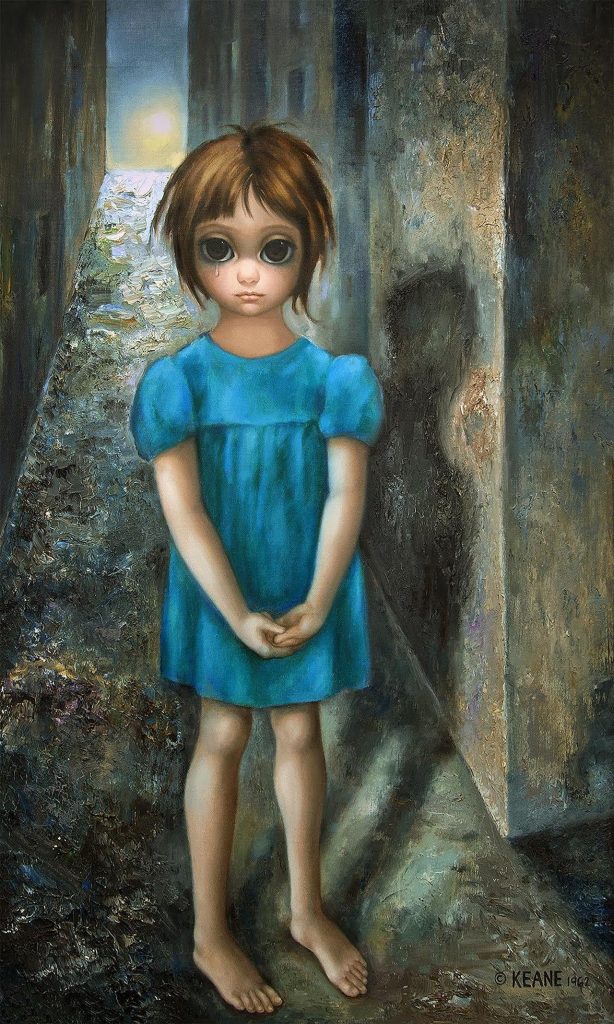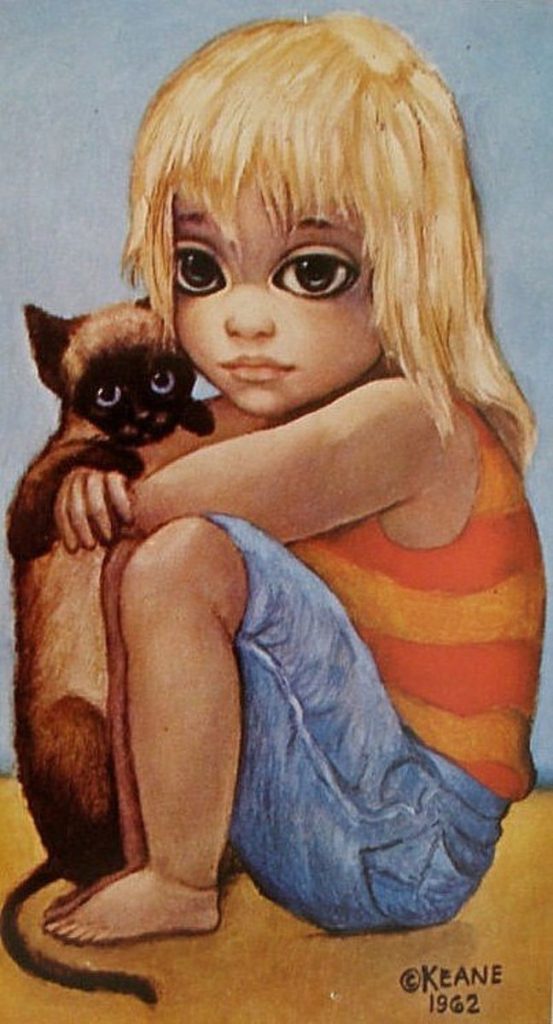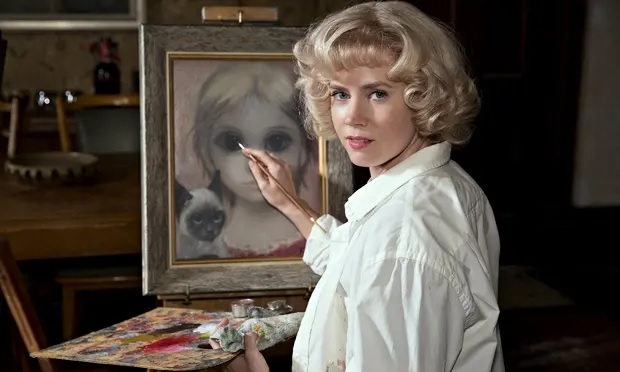Margaret Keane is maybe the only Artist who established herself as an artist in the courtroom in Western Art history. Margaret, an American artist known for painting subjects with big eyes and Artwork, was initially credited to her ex-husband for years. The story of People with Eyes and ‘lure’ in Western Art goes back to the 1950s and 1960s when Margaret walked out from her first abusive-toxic husband in early 1958 and reached San Francisco to live with her daughter.
After arriving in San Francisco and getting a job as a painter in a furniture company, she met Walter Keane, who eventually became her husband. Walter Keane used Margaret’s paintings, presented and popularised as his Artwork because she was vulnerable and weak and needed support for herself and her daughter. Margaret’s work was suddenly achieved commercially through cheap copies of prints, dishes, and cups. At the same time, her works were criticized as formulaic and cliché. Or the Time senior Art critic, John Canady, commented in the Movie, ‘Art should elevate, not pander’, or as Andy Warhol commented, ‘I think that what Keane has done is just terrific. It has to be good. If it were bad, so many people wouldn’t like it.

Critics and artists can have strong opinions about Art, and there is a question about what Art is and ‘why some people would like it, as Andy Warhol commented about Margaret’s Artwork. According to the Movie Big Eyes’, directed by Academy Award winner Tim Burton, Margareta’s paintings got enormous publicity when her work started to be displayed under Keane’s name. For almost ten years, Margarete painted daily in an isolated room in a home they bought distant from the city with the money he got from her paintings. He trapped Margaret, used her vulnerability to gain popularity and money, and established himself as an artist. Her works are widely accepted because she paints vulnerable subjects with enormous eyes and claims that ‘you can see things in the eyes, and eyes are the window to the soul. Margaret was naive, and her art practice went to popularise the lifelike imagery of her daughter. Her daughter filled her world with paintings, and after the success of Tim Burton movies, she held a gallery in San Francisco that boasts “the biggest collection of Margaret Keane’s art in the entire world.”

The entire story of Margaret’s artworks and Walter Keane seems a gossip column news that brings people’s attention to her paintings. The curious people come to see the work done by Margaret but sign as Keane after his fights with the famous Jaz club owner. Those stories became gossip news and turned into art sales. Success made them a team, and Margaret locked in a room and painted; Keane has gone viral in galleries and print sales, with her painting, taking credit, and handling publicity and sales.

Walter had never been an artist and assumed he had already used someone else’s Artwork to establish himself as a painter. But, as depicted in the Movie, Walter has a big mouth to talk about anything and is a born self-promoter. Margaret is ready to be signed as ‘Keane’ in her paintings because he manipulated her, ‘nobody may be interested in buying lady paintings. After the succession, Walter goes to a talk show, opens a new gallery, and becomes a local celebrity, and Margaret is unknown and never promotes herself as an artist.
Why Margaret, like women, accepted Keane’s dominating attitude in the 1950s and 60s is a remarkable query, and the Movie directly depicts the narration of the Artist’s life. Money is coming through her works, and ‘they’ spent it generously.
It’s a movie about Art and the life of an artist; like she once said, ‘Art is personal’ when Keane asks for the justification for her works to explain it as his work for media and people. Margaret paintings influenced toy designs and were celebrated for their direct impact on the viewers. Now, her works are counted as ‘popular’ Art; she was never a critical success.
Dorian Gray: When a Painting Succumbs for Us, Extending Eternity

Krispin Joseph PX, a poet and journalist, completed an MFA in art history and visual studies at the University of Hyderabad.





